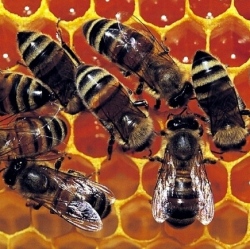
Honeybee colonies are dying at alarming rates worldwide. A variety of factors have been proposed to explain their decline, but the exact cause, and how bees can be saved, remains unclear. An article published on August 21st in PLOS Pathogens examines the viral landscape in honeybee colonies in New Zealand after the recent arrival of the parasitic Varroa destructor mite.
Varroa is thought to be one of the main stressors that reduce bee fitness. As they feed on the blood of pupae and adult bees, the mites can transmit several honeybee viruses with high efficiency. Uncontrolled Varroa infestation can thereby cause an accelerating virus epidemic and so kill a bee colony within two to three years. Interested in the complex interplay between bees, mites, and viruses, Fanny Mondet, from the University of Otago, Dunedin, New Zealand, and INRA, Avignon, France, and colleagues took advantage of a unique situation in New Zealand:
The country was only recently invaded by Varroa, which was first detected on the North Island in 2001, and still had an active infestation expansion front traveling southward into Varroa-free areas of the country when the study took place. The researchers’ aim was to monitor the first stages of the Varroa infestation and its consequences for bees and bee viruses. As they report, the arrival of Varroa dramatically changed the viral landscape within the honeybee colonies of New Zealand. Each of seven different virus species examined in detail responded in a unique way to the arrival, establishment, and persistence of the mite.
